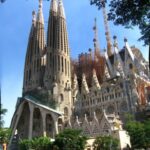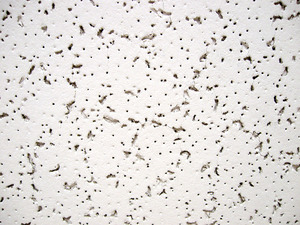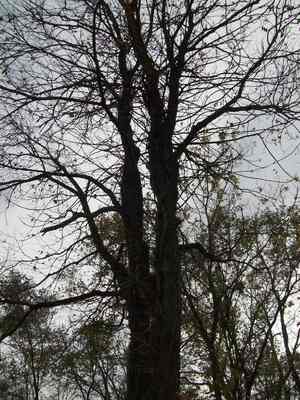Sagrada Familia, or Temple Expiatori de la Sagrada Familia, is an expiatory church in Barcelona, Spain. What is interesting about this church is its appearance. It has the appearance of a surreal set prop in a science fiction movie, if you leave out the construction equipment that is perpetually there. You see, Sagrada Familia has been under construction for more than one hundred years and construction continues to this day. The Expressionist style of the church – adopted by architect Antoni Gaudi – requires great attention to detail on a grand scale. Even incomplete as it stands, Sagrada Familia is a major attraction in Barcelona.
The land on which Sagrada Familia sits was purchased for the project in 1881. The original design proposed for the church was the work of architect Francisco de Paula del Villar y Lozano. The design was in the Gothic style. Work began on the foundation and the crypt in 1882. Shortly after, Lozano left and Gaudi took over.
Antoni Gaudi stuck to Lozano’s design for Sagrada Familia initially. However, he made his own plans after the apse and cloister were constructed. In 1892, construction on the extraordinary Nativity facade of Sagrada Familia was begun. This east-facing facade contains incredibly ornate depictions of several biblical events, including the birth of Jesus Christ. The apse facade was complete by 1894, and the Roser door, six years later.
In 1909, an area of Sagrada Familia, known as the Temporary Schools, was built for children associated with the church and its workers. The Temporary Schools have suffered fire damage and been rebuilt twice in their century of existence. One of these fires occurred during the Spanish Civil War and was deliberately lit by revolutionaries, who also set fire to the crypt and destroyed Gaudi’s workshop. This took place in 1933, after Gaudi’s death. Gaudi’s plans and drawings were destroyed, leaving his successors to replicate his ideas to the best of their abilities.
In 1911, Gaudi designed the Passion Facade, but it was not constructed until decades after his death. Most of it was completed between 1954 and 1976, though construction continues today. Like the Nativity Facade, the Passion facade contains detailed images from the Bible. In the case of this west-facing facade, the images are of the passion and death of Jesus Christ.
From 1914 forward, Antoni Gaudi put all of his effort into Sagrada Familia. In 1926, he spent the last months of his life living in a room next to the church’s apse. He knew that he would not live to see the result of his efforts. He said, “There is no reason to regret that I cannot finish the church. I will grow old, but others will come after me.” He was right, but he had no way of knowing how short his work on Sagrada Familia would be cut. On June 7, 1926, Antoni Gaudi was struck by a tram. He died on June 10 from his injuries.
Four men who had worked closely with Gaudi took over his work on Sagrada Familia, each in turn, until 1983. Two men have directed the project after them, one of whom is Jordi Boneti Armengol. He has been in charge of construction and design since 1984. Much work has been completed on Sagrada Familia since the death of the man behind its ethereal beauty died. Thankfully, the men who have come after him understood his design and have adhered to it as much as possible.
The third, and main, facade of Sagrada Familia is currently under construction. This is the Glory facade and it too will depict images from the Bible. Altogether, there will be 18 bell towers, 12 dedicated to apostles, 4 to the evangelists, one for Jesus and one for Mary. There are numerous ornate doors, windows, columns, sculptures, etc. throughout Sagrada Familia, all designed with respect to the Bible. It will be interesting to see what else will be added to this church in the next ten years or so. Construction is supposed to be complete in a decade or more.
Sources
Sagrada Familia, retrieved 11/7/10, sagradafamilia.cat/sf-eng/docs_instil/historia.php






